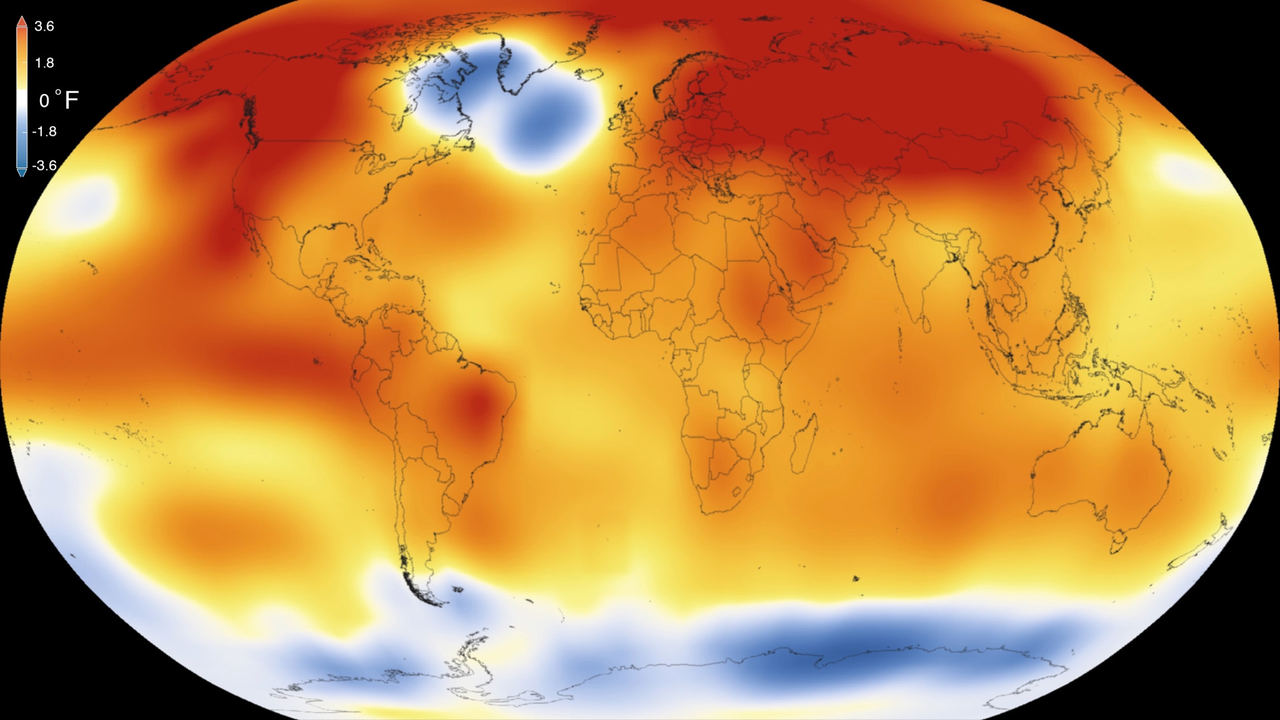
While the rest of the world warms, a mysterious area in the North Atlantic seems to be becoming colder. Using computational techniques, a team of researchers are beginning to understand why -- and what that means for the climate. Credit: Wikimedia.
Increased storminess may give rise to North Atlantic’s ‘cold blob’
Posted on February 1, 2022UNIVERSITY PARK, Pa. — While climate change is making much of the world warmer, temperatures in a subpolar region of the North Atlantic are getting cooler. A team of researchers report that changes in the wind pattern, among other factors, may be contributing to this “cold blob.”
In a study published in Climate Dynamics, the researchers report that a northward shift in the jet stream is contributing to a cooling of about .7 degrees Fahrenheit over the past century. Using computer simulations, the researchers found that more than half — 54% — of the observed cooling trend is a result of increased heat loss from the ocean induced by the overlying atmosphere. Strengthened local convection — whereby ocean mixing brings cold water from depth to the surface — explains another 38% of the trend.
According to the team, storminess increased in the region because the jet stream moved northward. As a result, there are more frequent and more intense storms in this region. The increase in storminess creates a stronger heat loss from the ocean and induces stronger convection in winter, leading to cooler temperatures in the region.
According to Laifang Li, assistant professor of meteorology and atmospheric science, Penn State, who is also an Institute for Computational and Data Sciences co-hire, the researchers’ findings run counter to some past studies that have suggested that the cold blob is evidence of a slowdown in the Atlantic Meridional Overturning Circulation — or AMOC — a large system of ocean currents that carry warm water from the tropics northwards into the North Atlantic.
Scientists hypothesize that a severe disruption to — or, worse, a shutdown in — the AMOC would have devastating consequences for many regions of the world, including creating almost Ice Age-like conditions in Europe and North America, according to Li.
“If we think about the AMOC as the supply train for heat into the subpolar ocean, as the AMOC slows down, the most straightforward effect is that the subpolar ocean will be much colder,” said Li. “That would more likely cool Europe’s climate because the region is not receiving the same heat as it did before.”
However, scientists will still need more research to determine if the AMOC can be completely ruled out as a factor in the cold blob formation, said Li, who worked with M. Susan Lozier, professor and Dean and Betsy Middleton and John Clark Sutherland Chair at Georgia Institute of Technology, and Feili Li, professor of physical oceanography, Xiamen University.
“Our studies suggest that the atmosphere is playing an important role, but we do not rule out the contribution of other factors such as a change in the AMOC,” said Li. “We are still uncertain about the precise attribution of this cooling trend to a specific mechanism. So, I think there are still a lot of open questions that need to be addressed.”
The study underscores the complexity of the phenomenon.
“Our work is further demonstration that sea surface temperatures in the subpolar North Atlantic are not easily explained by a single mechanism,” said Lozier. “Instead, we expect both atmospheric and oceanic dynamics, and their interaction, to drive variability in the sea surface temperatures in this climatically important region.”
Scientists have also been interested in this blob of cold water because it runs counter to the global warming trend, according to Li.
“This region may seem to be an outlier of what we might expect from the anthropogenic greenhouse effect, which is making most of our world warmer,” said Li. “But obviously, this cooling and its causal factors are a local manifestation of the greenhouse effect. It does make this region unique, though, and is one of the reasons that prompted us to start this study.”
To create the simulations, the team relied on data from the National Oceanic and Atmospheric Administration (NOAA), the Met Office and the Climate Data Store. They ran their models on Penn State’s Roar supercomputer, which is maintained by ICDS. Modeling weather and climate phenomena is complex because there are many variables to consider, including the interaction between both the atmosphere and the ocean, said Li.
Li expects those computational resources to be more important as the investigations into the cold blob and climate change progress.
“The atmosphere and ocean coupling may be more important than people thought,” said Li. “Previously, people thought the ocean in the middle or high latitudes was more passive compared to the tropical oceans. But, now, more studies are suggesting that the subpolar ocean can also feed back to the atmosphere, forming a positive coupling process, which could potentially amplify the temperature contrast between the tropic, subtropical and sub-polar region.”
Future work will likely examine how the weather in this region will react as the climate warms, according to Feili Li.
“To what extent the subpolar temperature would change and how in a warming climate are important questions,” said Feili Li. “After all, our goal is to isolate and weigh individual components of a very complex system.”
The National Oceanic and Atmospheric Administration supported this work.
